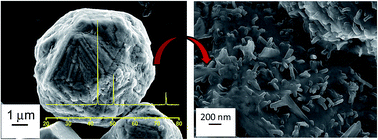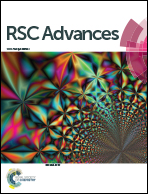Rapid template-free synthesis of an air-stable hierarchical copper nanoassembly and its use as a reusable catalyst for 4-nitrophenol reduction†
Abstract
A hierarchical copper nanoassembly was synthesized by one-pot solvothermal treatment at 150 °C for 2 h in the presence of copper nitrate, formamide and water. The product exhibited phase pure hierarchical Cu microspheroids (2–7 μm) comprising a nanorod (50–100 nm) assembly. The Cu microspheroids showed excellent air-stability, antioxidative properties and catalytic reduction of p-nitrophenol.


 Please wait while we load your content...
Please wait while we load your content...